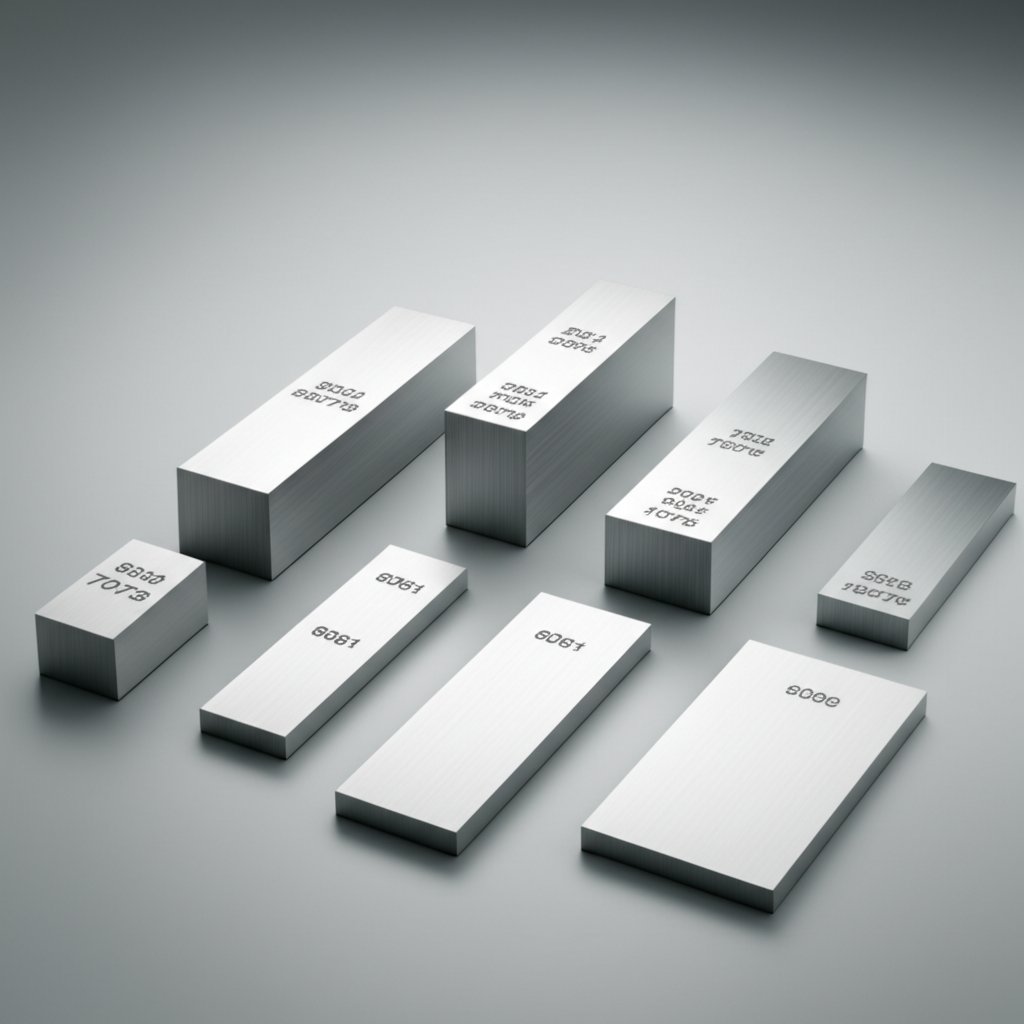
When you’re planning a project—whether it’s building an aircraft wing, designing a car frame, or selecting materials for a skyscraper—one question often comes up: How much does this material weigh for its size? That’s where the concept of density comes in. In simple terms, density is a fundamental physical property that tells us how much mass is packed into a given volume. It’s typically measured as mass per unit volume, and for metals like aluminum, engineers often use pounds per cubic inch (lb/in³) as the standard unit.
So, what is aluminium density? For most engineering applications, the density of aluminum is approximately 0.1 lb/in³ (or more precisely, 0.0975 lb/in³). This means that every cubic inch of aluminum weighs just under one-tenth of a pound—a remarkably low value compared to many other metals. Understanding this number is the foundation for accurate weight calculations and efficient material selection.
Why do professionals care so much about the density of aluminum lb in3? The answer lies in the practical demands of modern engineering. Whether you’re working in aerospace, automotive, or construction, knowing the density of a material allows you to:
For example, when designing an airplane, every ounce matters. Using a metal with low density—like aluminum—can dramatically reduce the aircraft’s weight, improve fuel efficiency, and enhance performance. The same logic applies to cars, trains, and even skyscrapers, where reducing dead weight translates into cost savings and better safety.
Density is the key to aluminum’s renowned strength-to-weight ratio, making it an essential factor in high-performance and lightweight engineering designs.
The physical properties of aluminum, such as its low density, high strength-to-weight ratio, and excellent corrosion resistance, are what make it so valuable across industries. As you’ll see in the following sections, understanding what is the density of aluminum is the first step to leveraging its full potential in your projects. Whether you’re a seasoned engineer or just getting started, mastering this concept will help you make more informed, efficient, and innovative choices.

Ever wondered why aluminum feels so light in your hand, yet remains impressively strong? The answer starts with its density—a defining characteristic that sets it apart from other metals. For pure aluminum, the universally recognized density is 0.0975 lb/in³ (pounds per cubic inch). This value isn’t just a rough estimate; it’s a scientific standard used worldwide by engineers and manufacturers for calculations and material selection.
But what does this number really mean? Imagine a cube of aluminum measuring exactly one inch on each side. That small block would weigh just under a tenth of a pound. This low mass density of aluminum is what makes it a favorite for projects where keeping weight down is critical—think aircraft bodies, automotive panels, and lightweight structures.
It’s important to note, though, that this value refers specifically to pure aluminum. In real-world applications, you’ll often encounter aluminum alloys, which can have slightly different densities due to added elements. We’ll explore those variations in the next section. For now, knowing the density of pure aluminum gives you a reliable starting point for any calculation or comparison.
Depending on your project or industry, you might see the density of al expressed in different units. For example, scientists often use grams per cubic centimeter (g/cm³), civil engineers might use kilograms per cubic meter (kg/m³), and architects in the US may prefer pounds per cubic foot (lb/ft³). Using the wrong unit can throw off your calculations—so accurate conversions are essential.
Here’s a handy table that shows how the density of pure aluminum converts across the most common units. If you ever need to convert g cc to lb in3, or vice versa, this chart will save you time and prevent costly mistakes:
| Unit | Density Value | Typical Use |
|---|---|---|
| Pounds per cubic inch (lb/in³) | 0.0975 | US engineering, machining |
| Grams per cubic centimeter (g/cm³) | 2.70 | Scientific, global standard |
| Kilograms per cubic meter (kg/m³) | 2,700 | Construction, civil engineering |
| Pounds per cubic foot (lb/ft³) | 168.6 | Building, architecture |
This table makes it simple to reference or convert the density of aluminum kg/m3 or density of aluminum lb ft3 for your specific needs. For example, suppose you’re collaborating internationally and need to switch between metric and imperial units. Just remember: 1 g/cm³ = 1,000 kg/m³ = 0.0361 lb/in³. So, if you know the density in one unit, you can quickly calculate it in another.
Understanding the density of aluminum g/cm3 and its equivalents is the foundation for accurate weight calculations and material comparisons. Up next, we’ll see how alloying elements can slightly shift these values and what that means for your project.
When you pick up a piece of aluminum and wonder why it feels lighter—or sometimes heavier—than expected, the answer often lies in alloying. But what does this really mean? Is aluminum an alloy by itself? Not quite. Pure aluminum is a single element, but in most practical applications, you’ll encounter aluminum alloys: materials where aluminum is combined with other elements to enhance performance. These combinations are what give aluminum and aluminum alloys their wide range of strengths, corrosion resistance, and, importantly, densities.
Why does this matter for your project? Because even a small change in al alloy composition can slightly shift its density, which in turn impacts everything from structural weight to shipping costs. For example, the aluminum alloy density of a 7075 grade (used in aircraft) is higher than that of a 6061 grade (common in construction), all due to the specific elements added during manufacturing.
So, how exactly do alloying elements affect the density of aluminum alloys? The answer comes down to the density of the elements being added. Here’s a quick breakdown:
Imagine you’re designing a bridge or an aircraft part. If you select a 6061 alloy (with magnesium and silicon), you’ll notice its density is about 0.0975 lb/in³—very close to pure aluminum. But switch to a 7075 alloy (with copper and zinc), and the density jumps to around 0.1015 lb/in³. That difference, though small per cubic inch, adds up fast in large structures and can influence everything from fuel efficiency to payload capacity.
To make this even clearer, here’s a summary of how each element impacts the density of aluminum alloys:
Understanding these subtle shifts in aluminum alloy density is critical for engineers and designers. It ensures that the material you select meets your weight, strength, and performance goals. In the next section, we’ll dive into a detailed chart of common aluminum alloys and their exact densities, so you can make informed decisions for your next project.

Ever wondered how the density of 6061 aluminum compares to that of 7075 or 5052? When you’re deciding on the right alloy for your application, knowing the exact density is more than a technical detail—it’s the foundation for accurate weight calculations, structural design, and cost estimates. Different aluminum grades offer a range of properties, but their densities can vary just enough to impact your project’s outcome.
Below is a comprehensive reference chart featuring the most widely used aluminum alloys. This table provides the typical density (lb/in³) for each alloy, along with their most common applications. Whether you’re calculating the weight of a structural beam or selecting material for aerospace components, this chart gives you the data you need at a glance.
| Alloy Series | Specific Grade | Typical Density (lb/in³) | Primary Applications |
|---|---|---|---|
| 1xxx | 1100 | 0.0979 | General sheet metal, chemical equipment, food industry |
| 3xxx | 3003 | 0.0986 | Heat exchangers, cooking utensils, architectural panels |
| 5xxx | 5052 | 0.0968 | Marine structures, fuel tanks, pressure vessels |
| 6xxx | 6061-T6 | 0.0975 | Structural frames, aerospace fittings, automotive parts |
| 7xxx | 7075-T6 | 0.1015 | Aerospace components, high-stress parts, sporting goods |
| 2xxx | 2024-T3 | 0.1004 | Aircraft structures, rivets, transport applications |
For a more extensive list covering additional alloys and their densities, you can refer to the Sunrise Metal density chart. This table makes it easy to compare the density of 6061 aluminum (0.0975 lb/in³) with the slightly higher 7075 aluminum density (0.1015 lb/in³) or the lighter aluminum 5052 density (0.0968 lb/in³). Even these small differences can add up in large assemblies, influencing both weight and performance.
When you see a grade like 6061-T6 or 7075-T6, the “T6” isn’t just an extra label—it’s a key to understanding how the alloy was processed and, in some cases, how its density might be slightly affected. So, what does it mean?
Understanding the temper is crucial because it affects not just density, but also mechanical properties like strength and ductility. For instance, 7075-T6 is known for its exceptional strength-to-weight ratio, making it a go-to for aerospace and high-performance applications, even though its density is a bit higher than 6061-T6.
In summary, when selecting an alloy, always consider both the specific grade and its temper designation. This ensures you’re using the correct density of al 6061 t6, density of 7075 aluminum, or density of 5052 aluminum for your calculations—and that your final product meets the required performance standards.
Now that you have a clear picture of how alloy and temper affect density, let’s see how aluminum stacks up against other common metals in terms of weight and performance.
When you’re choosing a metal for your next project, the question isn’t just about strength—it’s also about weight. Imagine you’re designing a bridge, a car chassis, or even a high-rise structure. The weight of aluminium vs steel can make a dramatic difference in everything from transport costs to energy efficiency. But how does aluminum really compare to other common engineering metals?
Let’s break it down with a metal density chart that puts the numbers side by side. This density chart of metals uses the same units—pounds per cubic inch (lb/in³)—so you can easily compare the density of aluminum lb in3 with steel, copper, titanium, and more. All data is taken from trusted engineering sources (Engineers Edge):
| Material | Density (lb/in³) | Density (lb/ft³) | Key Attribute |
|---|---|---|---|
| Aluminum (6061) | 0.098 | 169 | Lightweight, corrosion resistant |
| Carbon Steel | 0.282 | 487 | Strong, economical, heavy |
| Stainless Steel | 0.278-0.289 | 481-499 | Corrosion resistant, heavy |
| Titanium | 0.163 | 281 | High strength-to-weight, expensive |
| Copper | 0.323 | 558 | Excellent conductivity, very heavy |
As you can see, aluminum’s density—at just 0.098 lb/in³—is less than half that of steel and dramatically lower than copper. This isn’t just a minor detail: it’s the reason why aluminum is the metal of choice for lightweight engineering. For a quick comparison, a solid block of aluminum will weigh about one-third as much as the same-sized block of steel, and less than a third compared to copper (density of copper lb in3 is 0.323).
But why does this matter in real-world projects? The answer is in the strength-to-weight ratio. Aluminum alloys like 6061 or 7075 offer high strength while keeping weight to a minimum. This is why they’re used in aircraft frames, car bodies, and even high-performance bicycles. Lower weight means:
It’s not just about being light, though. Aluminum’s unique balance of lightness and strength—especially when compared to the density of different metals—means you can design thinner, more efficient structures without sacrificing performance. For example, in the metal density table above, titanium is also light and strong, but it’s far more expensive and harder to work with than aluminum. Meanwhile, copper’s high density makes it suitable for electrical applications, but not for weight-sensitive designs.
In summary, reviewing the density of various metals makes it clear why aluminum is so widely used in industries where every ounce counts. Its low density, combined with corrosion resistance and versatility, gives it a unique edge over heavier metals. Next, let’s explore how processing and temperature can further influence the final density and performance of aluminum components.

When you consider the density of alluminum for your next project, it’s easy to assume that the numbers in the charts are set in stone. But did you know that how aluminum is formed—from casting to rolling to extrusion—can subtly change its actual density? Sounds complex? Let’s break it down with practical examples and science-backed insights.
Manufacturing methods play a crucial role in shaping the aluminum crystal structure and, by extension, its density. Here’s how some of the most common processes make a difference:
Microstructure matters too. The arrangement of atoms and the presence of grain boundaries, which are influenced by the cooling rate and alloying elements, can affect the compactness of the metal. A finer grain structure usually means fewer and smaller pores, resulting in a higher effective density.
While alloy composition sets the baseline density, the manufacturing process determines the final component's real-world performance.
Imagine you’re using aluminum in an environment that heats up or cools down—like an aircraft wing at high altitude or a facade exposed to summer sun. You might be surprised to learn that the density of alluminum isn’t completely fixed; it shifts slightly with temperature.
This is due to thermal expansion: as the temperature rises, aluminum atoms vibrate more and move farther apart, causing the material to expand. The mass stays the same, but the volume increases—so the density drops. For instance, pure aluminum’s density decreases from 2.70 g/cm³ at 20°C to about 2.68 g/cm³ at 200°C (reference). While these changes are typically less than 1%, they become important in precision engineering or when operating across wide temperature ranges.
Still curious about the nuances of aluminum density and how it affects your design choices? For a deeper dive—including more worked examples and tips for tricky shapes—be sure to check out this comprehensive guide on aluminum density.
In summary, if you’re calculating the density of aluminum foil for electronics or specifying a structural beam, remember: the numbers in the tables are a starting point. The actual density of alluminum in your finished part depends on how it’s formed and the conditions it experiences. Next, let’s put this knowledge into practice by learning how to use density for accurate weight calculations in real-world designs.
Ever looked at a stack of aluminum sheets and wondered, "How heavy is aluminum in this pile?" Or maybe you’re quoting a project and need to estimate shipping costs or structural loads. The good news is: calculating the weight of aluminum is straightforward if you know two things—its density and its volume.
The essential formula you’ll use is:
Weight = Volume × Density
For aluminum, the standard density used in calculations is 0.0975 lb/in³. This makes it easy to determine the aluminum weight per cubic inch—just multiply the volume (in cubic inches) by this density value. It’s a method trusted by engineers and fabricators worldwide, and it works for all shapes: plates, bars, tubes, and more.
Here’s why this matters: Knowing the weight per cubic inch of aluminum lets you plan for material handling, shipping, and even compliance with design codes. Whether you’re building a lightweight frame or a massive structure, accuracy here keeps your project on track and your costs predictable.
Let’s walk through a real example so you can see exactly how to apply this formula. Imagine you need to calculate the aluminum weight for a plate that’s 24 inches long, 12 inches wide, and 0.5 inches thick. Here’s how you’d do it:
Sounds simple? That’s the beauty of using a consistent density value. If you’re working with a different alloy, just swap in the correct density from the alloy chart earlier in this guide. For more complex shapes—like tubes or custom profiles—calculate the volume of the material (subtracting any hollow sections), then multiply by the density as above. This approach holds true whether you need to estimate aluminum weights for a single part or an entire batch.
Pro Tip: If you want to double-check your math or need to calculate weights for a variety of aluminum products, you can use online tools like the Worthwill Aluminum Weight Calculator for added convenience and accuracy.
Understanding the weight of aluminum per cubic inch is more than a math exercise—it’s a critical step for engineers, fabricators, and buyers who want to get their projects right the first time. Next, let’s see how aluminum’s low density creates real-world advantages in industries ranging from aerospace to electronics.

Imagine if airplanes and cars were made from much heavier metals—travel would be slower, fuel costs would soar, and innovation would stall. The low density of aluminum lb in3 is a true game-changer, especially in industries where every ounce matters. When you ask, what are aluminum used for in high-performance sectors, the answer often starts with its ability to deliver strength without the burden of excess weight.
In aerospace, aluminum’s lightweight nature allows engineers to design aircraft that are both sturdy and remarkably fuel-efficient. In fact, aluminum alloys make up a significant percentage of the structural components in modern airplanes, from the fuselage to the wings and even the cockpit instruments. This same principle drives its use in automotive manufacturing, where reducing vehicle weight translates directly to improved fuel economy and lower emissions. According to industry resources, the average aluminum content in cars is expected to increase dramatically as manufacturers strive for lighter, more sustainable vehicles.
But the uses of aluminum in industry extend far beyond vehicles. In construction, aluminum’s low density makes it easier and more cost-effective to work with, while its corrosion resistance ensures that buildings and bridges require less maintenance over time. For architects, the ability to curve, cut, and weld aluminum into almost any shape opens up creative possibilities that heavier, less flexible metals simply can’t match. This is why aluminum is featured in everything from window frames to iconic skyscrapers.
Electronics and consumer goods also benefit from the unique aluminum metal uses. Its combination of lightness, durability, and excellent thermal conductivity makes it ideal for dissipating heat in devices like laptops, smartphones, and LED lighting. You’ll find aluminum in heat sinks, wiring, and even the sleek casings of high-end gadgets.
When you consider the important uses of aluminium, it’s clear that its low density is the foundation for countless innovations. From transportation and construction to electronics and packaging, the uses of aluminium metal shape the modern world in visible and invisible ways. In the next section, we’ll look at why sourcing high-quality aluminum—and ensuring its properties are consistent—is essential for achieving reliable results in any application.
Imagine investing months in engineering design, only to discover that your final product doesn’t meet performance expectations. Sounds frustrating, right? In many cases, the culprit is a subtle—but critical—variation in material properties, such as density. For aluminum, even a small deviation from the expected density of aluminum lb in3 can signal impurities, inconsistent processing, or the use of an incorrect alloy. This is why material consistency is absolutely non-negotiable in engineering and manufacturing.
When you specify aluminum specifications for your project—whether it’s a lightweight aerospace frame or a high-strength architectural extrusion—you rely on the certified physical properties of the metal. Consistent density means you can trust calculations for weight, strength, and durability. If the density is off, it could indicate issues ranging from unapproved alloying elements to manufacturing defects. For critical applications, this can impact safety, regulatory compliance, and long-term performance.
That’s why referencing an aluminum types chart and following the right aluminium specification is so important. These tools help engineers and buyers verify that the chosen material matches the necessary standards for aluminium alloys, ensuring reliable results every time.
So, how do you make sure your aluminum meets the mark? The answer is simple: work with a trusted supplier who understands the nuances of types of aluminum and can guarantee consistent quality from batch to batch. For projects that demand precise density, mechanical performance, and flawless finishes, your manufacturer’s expertise is just as important as the raw material itself.
If you’re seeking a partner who meets these high standards, Shengxin Aluminium stands out as a professional manufacturer with a proven track record. From standard extrusions to custom profiles, Shengxin delivers products that align with strict aluminium specification requirements, ensuring your project’s success from the very first step.
In summary, achieving optimal performance in any engineering project starts with sourcing quality aluminum—matched to the right density, alloy, and processing standards. Always insist on certified, consistent materials, and collaborate with manufacturers who put quality and precision first. That’s how you turn a great design into a reliable, high-performing reality.
The standard density of pure aluminum is 0.0975 lb/in³. This value is widely used by engineers and manufacturers for accurate weight calculations and is consistent across most engineering references.
Alloying elements such as copper and zinc increase aluminum's density, while magnesium and silicon can reduce or slightly alter it. The specific combination of elements in each alloy series leads to slight differences in density, which can impact weight and performance in applications.
Understanding aluminum's density is crucial for calculating component weights, selecting suitable materials, and ensuring structures meet strength and performance requirements. Accurate density values help engineers optimize designs for cost, efficiency, and safety.
To calculate the weight, multiply the part's volume (in cubic inches) by the density (0.0975 lb/in³ for pure aluminum). For example, a part with a volume of 100 in³ would weigh 9.75 lbs. Adjust the density value if using a specific alloy.
A trusted aluminum supplier should provide certified alloys with consistent density and properties, offer technical support, and meet industry standards. Companies like Shengxin Aluminum deliver custom and standard profiles with strict quality control, ensuring optimal performance for your project.
 serviço on-line
serviço on-line 0086 136 3563 2360
0086 136 3563 2360 sales@sxalu.com
sales@sxalu.com +86 136 3563 2360
+86 136 3563 2360